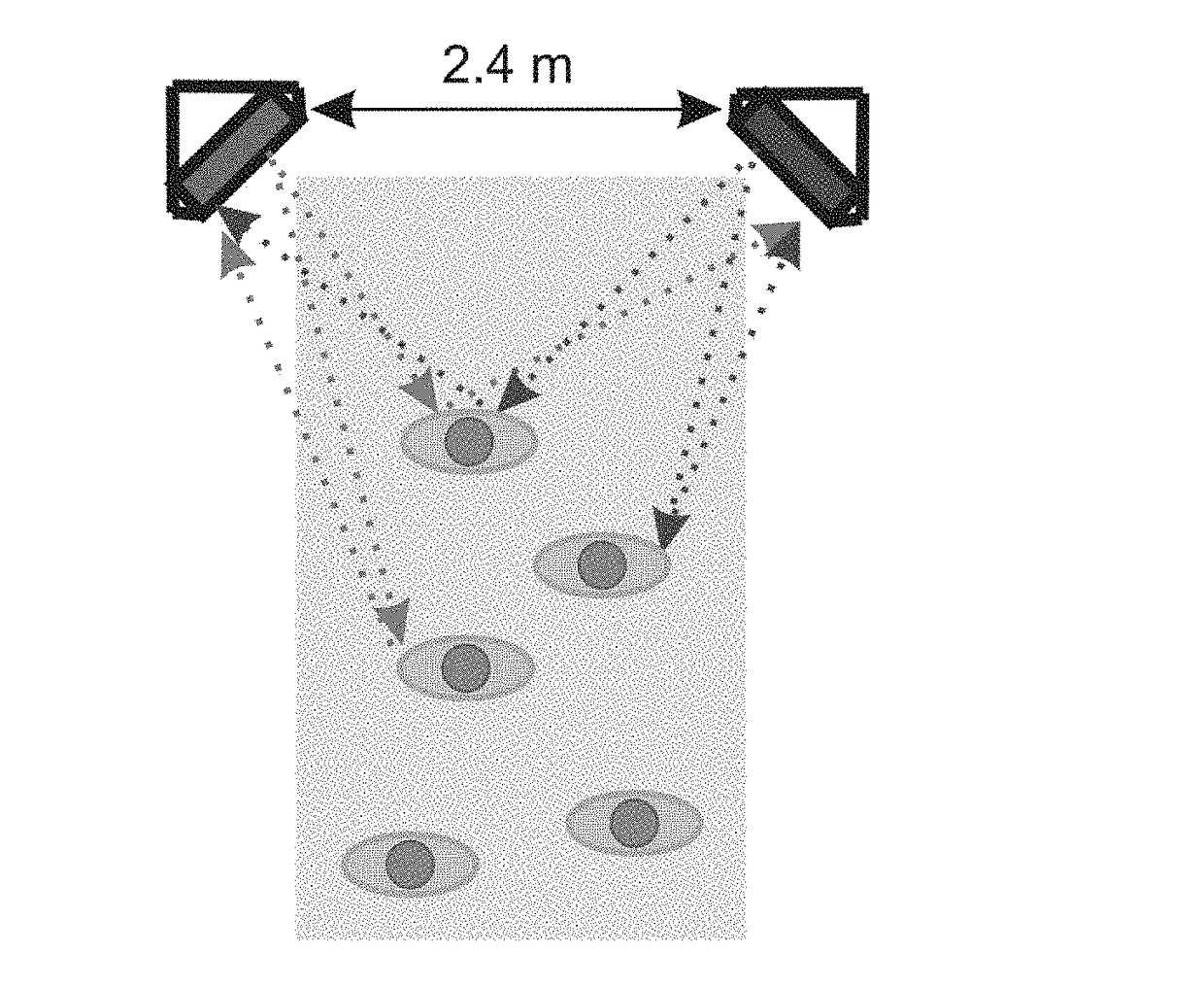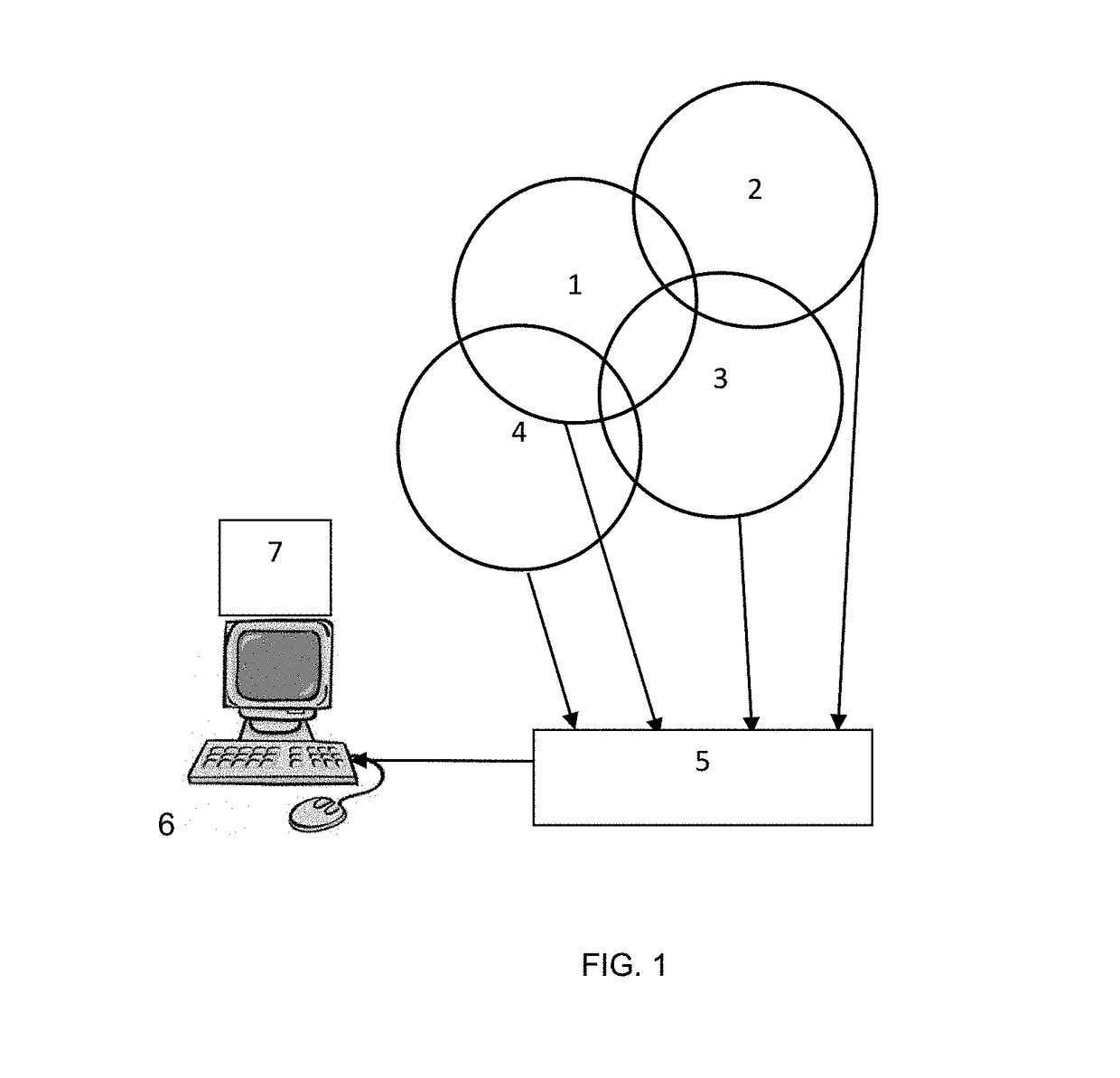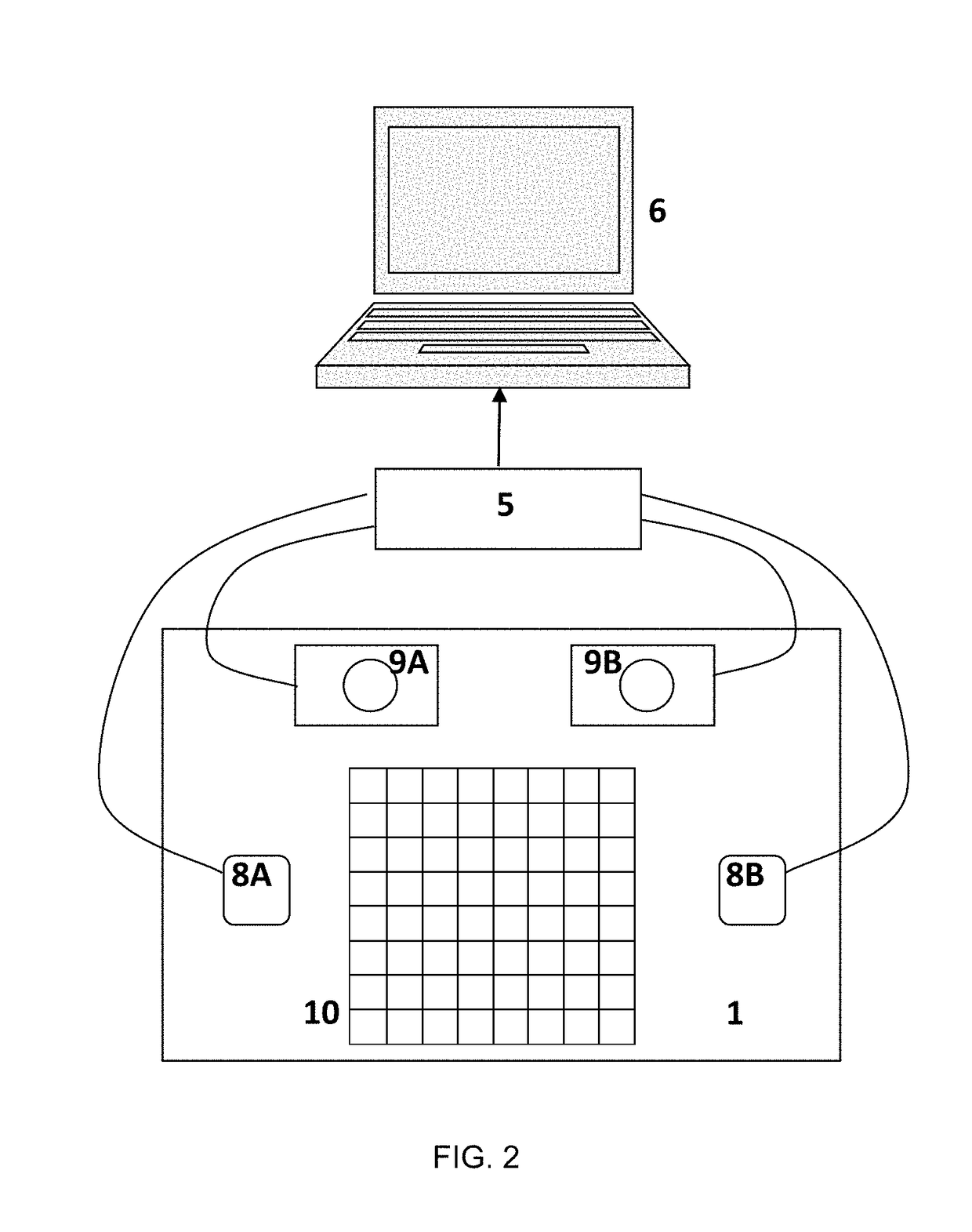Methods and systems for non-cooperative automatic security screening in crowded areas
a security screening and non-cooperative technology, applied in the field of multiple threat detection systems, can solve the problems of inability to detect radiation/nuclear materials, prohibitive cost of using existing inspection systems, and high operational costs
- Summary
- Abstract
- Description
- Claims
- Application Information
AI Technical Summary
Benefits of technology
Problems solved by technology
Method used
Image
Examples
example 1
[0119]With a speed of 15 frames per second (fps), and a person moving approximately 10 cm per frame, the system of the present invention captures targets without losing processed information before the subject moves too far. If the speed decreases by 5 fps, the system would lose a tracked target because that target will have shifted 30 cm and may already cross into a neighboring trajectory channel of waves. Thus, a higher fps allows for such real-time processing while also providing the capability of processing several targets at once. In general, the more frames per second, the greater the performance and probability of detection, since all frames are used in the analysis independently and in combination contribute to any final alarm decision. Current prior art in the field of invention is limited to a maximum of 15 fps or to non-moving targets, or both. The present invention operates at greater than 15 fps and applies to both moving and non-moving targets at the same rate of 15 fp...
PUM
 Login to View More
Login to View More Abstract
Description
Claims
Application Information
 Login to View More
Login to View More - R&D
- Intellectual Property
- Life Sciences
- Materials
- Tech Scout
- Unparalleled Data Quality
- Higher Quality Content
- 60% Fewer Hallucinations
Browse by: Latest US Patents, China's latest patents, Technical Efficacy Thesaurus, Application Domain, Technology Topic, Popular Technical Reports.
© 2025 PatSnap. All rights reserved.Legal|Privacy policy|Modern Slavery Act Transparency Statement|Sitemap|About US| Contact US: help@patsnap.com



